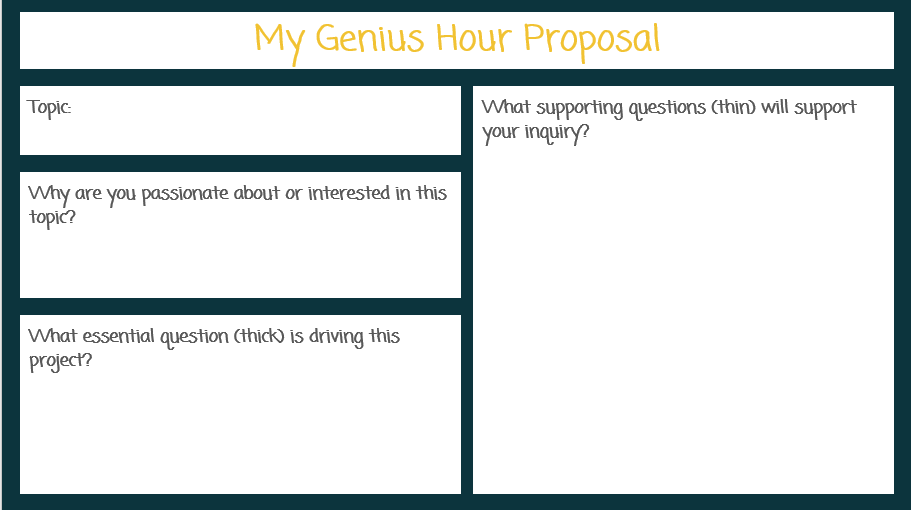What is Genius Hour?
In the Genius Hour model, instructors allocate a portion of class time—often the 20 percent that gives the approach an alternate name (20% Time)—for student exploration of a self-selected and/or given topic. Students turn to an array of sources in the course of their explorations and consider the topic from a wide variety of angles before synthesizing all of their research into a central understanding. This culminates in a final product, project, or other such artifact, that is shared with the class and potentially the larger school community. …
But an hour is a long time...
so, how can we possibly take the genius of genius hour and make it work for us in LESS time to further personalized learning?By making a little time for inquiry.
This will undoubtedly look at little different at each grade level, with different structures and supports.
How would this work?
In elementary school, inquiry might be a station that students are able to rotate into once a week, or perhaps an option for students during WIN block. Inquiry might be very guided and on a particular topic, as this kindergarten teacher shows, or it might be a little more independent: students can use grade-level resources (reading, video, or simulation) curated on Destiny Discover, which is curated at GES (with resources like PebbleGo!), GMS, and GHS, or teachers might provide source selections on different topics related to class learning.
Documentation of learning can take different forms and be as long or short as the student can provide. Alice Vigors shares the idea to give a Google slides template for students to use to "Blog" about what they are learning; using Mote or Screencastify (which we subscribe to!) could allow students who struggle with writing to record on the slides...or perhaps students create a Flip post that explains in 1-2 minutes what they learned during their inquiry that day. It might even be an annotation of a paper that students take a picture of and share to Google classroom!
Secondary students might also have research as a station or use WEB or SIB time to pursue inquiry! GMS and GHS students can use Noodletools (See your Library Media Specialist to show you this cool tool!) to easily keep track of and share their learning.
Melissa Kruse, keeper of the Reading and Writing Haven blog, shares 6 Ways to Differentiate Research Paper Lessons that might spark additional ideas for secondary teachers how providing time for research can help teachers reach individuals and small groups at their different places and paces.
However, this research need not lead to a paper--students might simply present their learning, students might create TED Talks, or students could create a Google site.
There is so much research behind the benefits of embracing inquiry and so many resources for implementing genius hour--reach out to us if you want to create your own plan!


No comments:
Post a Comment
Have something to ask or add? Let us know! We have moderation turned on (just in case), but we will be sure to approve new comments each week day.